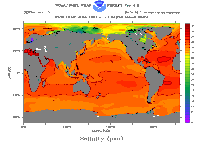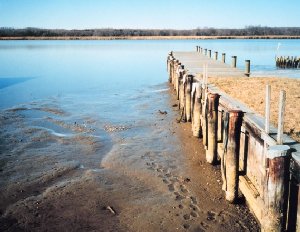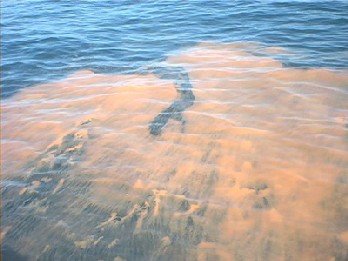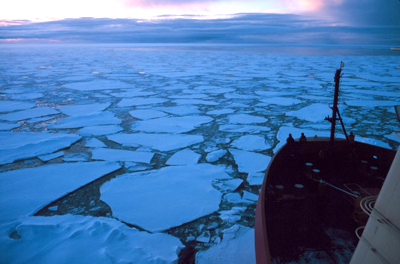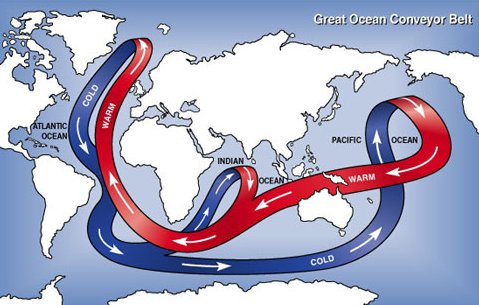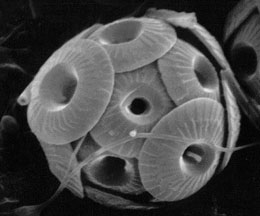Click on image for full size
Image courtesy of NOAA
Salinity
About 70% of the Earth is covered with water. Over 97% of that water is found in the oceans. Everyone who has taken in a mouthful of ocean water while swimming knows that the ocean is really salty!Dissolved salts in ocean water make it taste salty. Fresh water has dissolved salts in it too, but not nearly as many as ocean water! These dissolved salts can come from the land, precipitation, or the atmosphere, and are particles that have completely mixed in with the water.
Ocean water is about 3.5% salt. That means that if the oceans dried up completely, enough salt would be left behind to build a 180-mile-tall, one- mile-thick wall around the equator! And more than 90 percent of that salt would be sodium chloride, or ordinary table salt. The oceans sure contain a lot of salt. How did that salt come to be there?
All over the globe and from the top of the ocean all the way to the bottom of the ocean, salinity is between ~33-37 ppt or psu (average salinity of the ocean is 35 ppt). The image shown on this page shows salinity measured at the surface of the ocean across the globe. Almost the entire ocean is colored some shade of orange, corresponding to a salinity measurement around 33-36 ppt or psu.
The oceans are naturally salty. Life in the oceans has adapted to this salty environment. But, most creatures that live in the ocean could not live in fresh water. When the salty waters of the ocean meet fresh water, an estuary is formed. This is a special environment where some creatures have learned to adapt to a mixture of fresh and salt water. Humans have the responsibility to make sure their actions are not causing damage to these special environments where life thrives. For more information on salinity, please use the links below...


